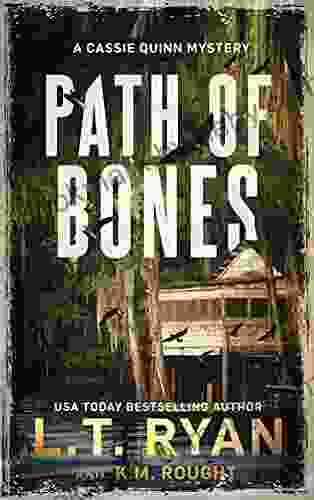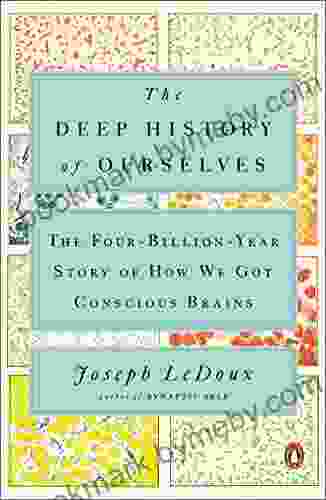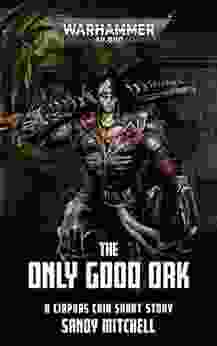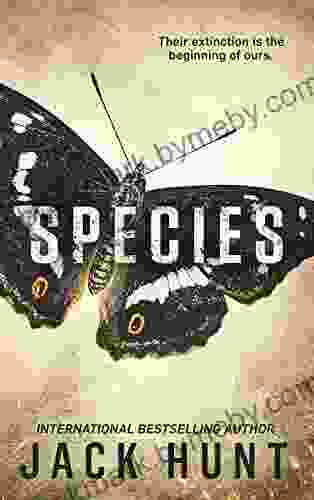The Four Billion-Year Odyssey of Consciousness: A Journey into the Depths of Our Being

Within the vast expanse of the cosmos, amidst the intricate tapestry of life, there lies a profound enigma that has captivated the minds of philosophers, scientists, and theologians for eons: the mystery of consciousness. How did we, as humans, come to possess the remarkable capacity for self-awareness, introspection, and the ability to contemplate our own existence?
4.4 out of 5
| Language | : | English |
| File size | : | 44236 KB |
| Text-to-Speech | : | Enabled |
| Screen Reader | : | Supported |
| Enhanced typesetting | : | Enabled |
| X-Ray | : | Enabled |
| Word Wise | : | Enabled |
| Print length | : | 432 pages |
In his groundbreaking book, "The Four Billion-Year Story of How We Got Conscious Brains," acclaimed neuroscientist and evolutionary biologist, Dr. Richard Dawkins, embarks on an epic voyage through time and consciousness, providing a comprehensive and thought-provoking account of the origins of our conscious minds. Drawing upon cutting-edge scientific research and a profound understanding of evolutionary principles, Dr. Dawkins unravels the captivating story of how our brains evolved over billions of years, ultimately leading to the emergence of consciousness.
The Evolutionary Roots of Consciousness
The journey of consciousness begins approximately four billion years ago, with the emergence of the first life forms on Earth. These early organisms possessed a rudimentary level of consciousness, allowing them to respond to their environment and make basic decisions. As life evolved, so too did the complexity of consciousness. Invertebrates, such as insects and worms, developed more sophisticated nervous systems, enabling them to learn and adapt to their surroundings.
The advent of vertebrates marked a significant milestone in the evolution of consciousness. The development of a central nervous system and a brain allowed vertebrates to process information more efficiently, resulting in enhanced learning and memory capabilities. Fish, amphibians, reptiles, and birds exhibited increasingly complex behaviors, suggesting the presence of a higher level of consciousness.
The Primate Connection
The evolution of primates marked a pivotal point in the development of consciousness. With larger brains and more complex social structures, primates exhibited remarkable cognitive abilities, including tool use, language, and problem-solving. The emergence of self-awareness and the ability to recognize oneself in a mirror provided further evidence of the sophisticated consciousness of primates.
Among the primates, the genus Homo stood out as the most cognitively advanced. Homo erectus, an early human ancestor, possessed a brain significantly larger than that of other primates, indicating a higher level of intelligence. The development of complex social structures and tool-making skills further hinted at the presence of consciousness in these early humans.
The Human Brain: A Marvel of Complexity
The pinnacle of the evolutionary journey of consciousness is the human brain. With an estimated 86 billion neurons and an intricate network of connections, the human brain is the most complex organ in the known universe. It allows us to experience the world through our senses, process information, make decisions, and form memories.
The human brain is divided into two hemispheres, each with specialized functions. The left hemisphere is primarily responsible for language, logic, and analytical thinking, while the right hemisphere is involved in spatial reasoning, creativity, and emotional processing. The interaction between these two hemispheres contributes to the richness and complexity of our conscious experience.
The Mystery of Subjectivity
One of the most intriguing aspects of consciousness is its subjective nature. Each individual experiences the world from their own unique perspective, with their own thoughts, feelings, and emotions. This subjective experience, known as qualia, remains one of the greatest mysteries in science.
Dr. Dawkins proposes that qualia may arise from the complex interactions of billions of neurons in the brain. While the exact mechanisms remain elusive, the subjective nature of consciousness is a testament to the incredible complexity and wonder of the human mind.
The Future of Consciousness
As we continue to unravel the mysteries of consciousness, the implications for our understanding of ourselves and our place in the universe are profound. Advances in neuroscience and artificial intelligence may provide further insights into the nature of consciousness and its potential for future evolution.
The journey of consciousness is an ongoing one, a testament to the remarkable adaptability and resilience of life on Earth. As we delve deeper into the depths of our own minds, we may come to understand more fully our place within the grand tapestry of existence.
In "The Four Billion-Year Story of How We Got Conscious Brains," Dr. Richard Dawkins takes us on an illuminating odyssey through the history of consciousness, providing a comprehensive and thought-provoking account of the evolution of our conscious minds. This book is a must-read for anyone interested in understanding the greatest mystery of all: the nature of our own consciousness.
4.4 out of 5
| Language | : | English |
| File size | : | 44236 KB |
| Text-to-Speech | : | Enabled |
| Screen Reader | : | Supported |
| Enhanced typesetting | : | Enabled |
| X-Ray | : | Enabled |
| Word Wise | : | Enabled |
| Print length | : | 432 pages |
Do you want to contribute by writing guest posts on this blog?
Please contact us and send us a resume of previous articles that you have written.
 Book
Book Novel
Novel Page
Page Chapter
Chapter Text
Text Story
Story Genre
Genre Reader
Reader Library
Library Paperback
Paperback E-book
E-book Magazine
Magazine Newspaper
Newspaper Paragraph
Paragraph Sentence
Sentence Bookmark
Bookmark Shelf
Shelf Glossary
Glossary Bibliography
Bibliography Foreword
Foreword Preface
Preface Synopsis
Synopsis Annotation
Annotation Footnote
Footnote Manuscript
Manuscript Scroll
Scroll Codex
Codex Tome
Tome Bestseller
Bestseller Classics
Classics Library card
Library card Narrative
Narrative Biography
Biography Autobiography
Autobiography Memoir
Memoir Reference
Reference Encyclopedia
Encyclopedia J C Romero
J C Romero James Bacchus
James Bacchus Jack Donnelly
Jack Donnelly Tony Daffern
Tony Daffern M J Fievre
M J Fievre Ronald K Fierstein
Ronald K Fierstein Sue Burke
Sue Burke Jack Carr
Jack Carr Michael Jackson
Michael Jackson Jill Brown
Jill Brown Gail Rock
Gail Rock Mary Pope Osborne
Mary Pope Osborne J Stephen Jones
J Stephen Jones J Michael Catron
J Michael Catron Julie Berry
Julie Berry James Dillehay
James Dillehay Josh Wolk
Josh Wolk Samantha Wells
Samantha Wells Michelle Porter
Michelle Porter J P Mcevoy
J P Mcevoy
Light bulbAdvertise smarter! Our strategic ad space ensures maximum exposure. Reserve your spot today!

 Willie BlairClimb Higher: A Comprehensive Guide to Conquering Every Peak with Climbing...
Willie BlairClimb Higher: A Comprehensive Guide to Conquering Every Peak with Climbing... Robert Louis StevensonFollow ·3.6k
Robert Louis StevensonFollow ·3.6k Julio CortázarFollow ·3k
Julio CortázarFollow ·3k Alex ReedFollow ·9.4k
Alex ReedFollow ·9.4k Houston PowellFollow ·13.1k
Houston PowellFollow ·13.1k Seth HayesFollow ·10k
Seth HayesFollow ·10k John ParkerFollow ·14.8k
John ParkerFollow ·14.8k Colton CarterFollow ·9.1k
Colton CarterFollow ·9.1k Alvin BellFollow ·12.5k
Alvin BellFollow ·12.5k

 Phil Foster
Phil FosterThe Unforgettable Easter: Ramona's Journey of Discovery...
Embark on Ramona's Extraordinary Easter...

 Levi Powell
Levi PowellThe Old City and Mount of Olives: A Journey Through...
Jerusalem, a city etched into the annals of...

 Henry Hayes
Henry HayesThe Clearances: A Journey Through Scotland's Hidden...
In the 18th and 19th...

 Edward Reed
Edward ReedUnravel the Enigmatic 'Path of Bones' with Cassie Quinn...
Step into the...
4.4 out of 5
| Language | : | English |
| File size | : | 44236 KB |
| Text-to-Speech | : | Enabled |
| Screen Reader | : | Supported |
| Enhanced typesetting | : | Enabled |
| X-Ray | : | Enabled |
| Word Wise | : | Enabled |
| Print length | : | 432 pages |














